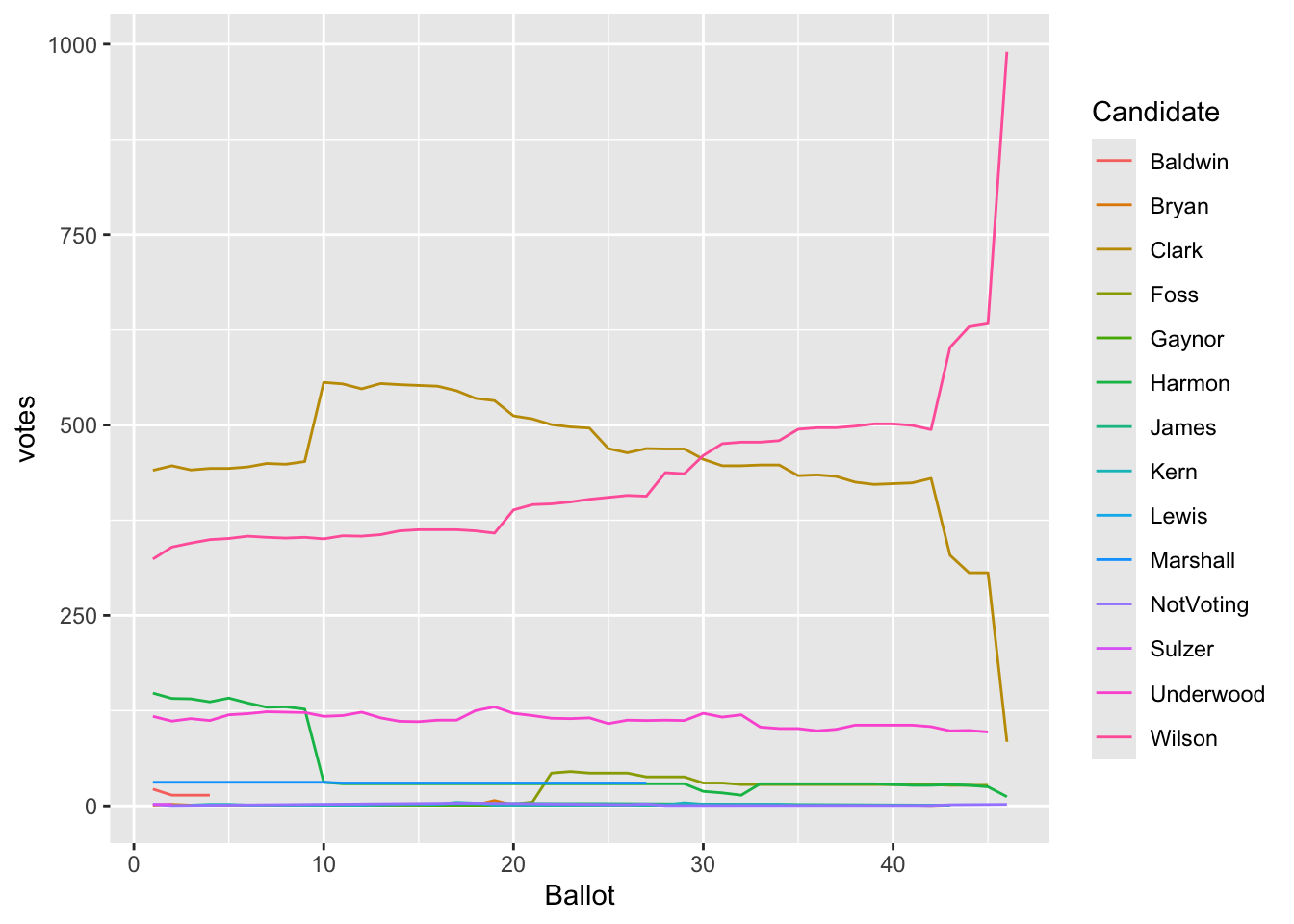4.1 A first look at the 1912 Democratic Convention
American political conventions are an important part of the four-year election cycle, when the parties’ presidential candidates are nominated. For many years the winning candidates have been known before the conventions started. That was not always the case. In 1912 Woodrow Wilson was only selected on the 46th ballot.
Wilson is known for his participation at the Paris Peace Conference after World War I and the fourteen points for peace he propounded. His regressive policy on racial segregation is not so well-known and was not apparent before his election as President either. W. E. B. Du Bois, the famous black sociologist known for his maps and charts, campaigned for Wilson, but must have been very disappointed by Wilson’s actions afterwards.

Figure 4.1: Votes for the candidates over the 46 ballots
Figure 4.1 shows the development of delegate support for the candidates during the convention. There were two main contenders, Wilson and Clark, with Clark initially ahead and then going even further ahead before Wilson gradually caught up with him and edged in front. The convention finally turned for Wilson in the last few ballots.
While the default plot in Figure 4.1 tells the main story, there is other information in the data too.